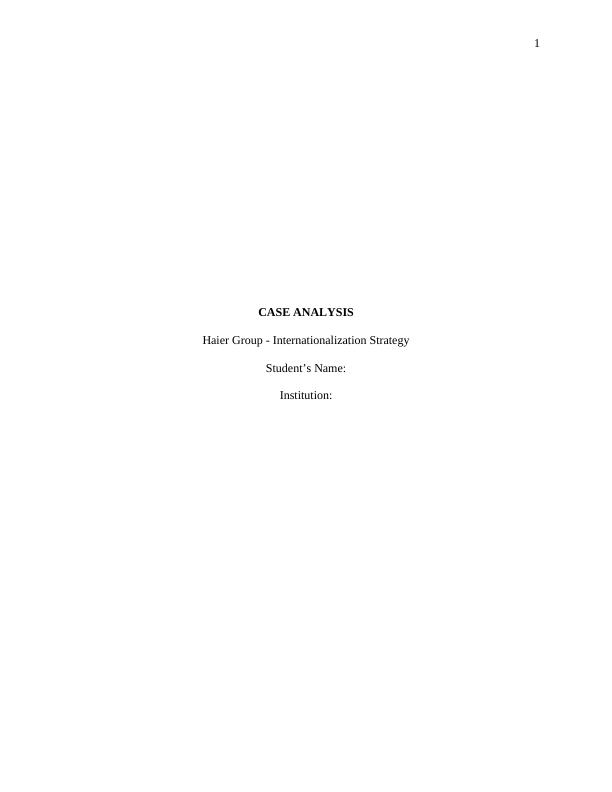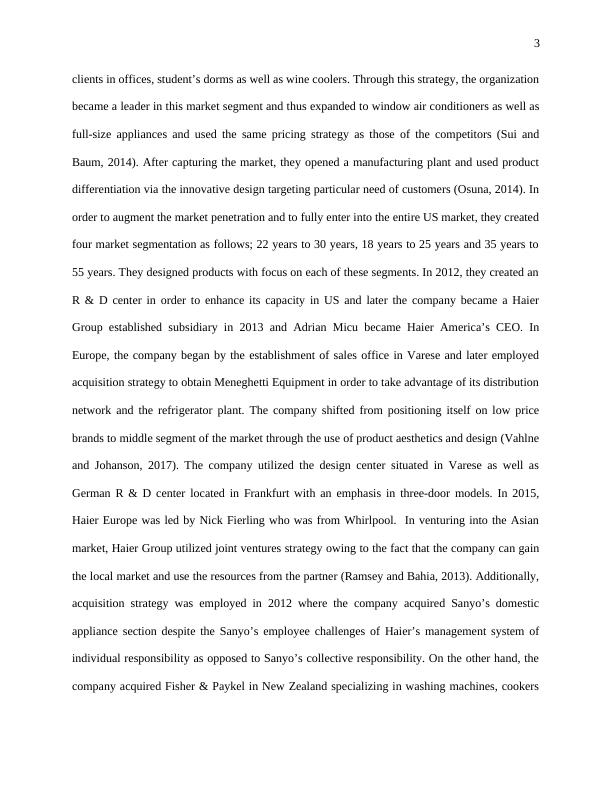Haier Group - Internationalization Strategy
14 Pages4556 Words337 Views
Added on 2023-06-11
About This Document
This article analyzes Haier Group's internationalization strategy since the early 1990s, its comparison with Western enterprises, and its principles and methods of management. It discusses the success of Haier's strategy, its value proposition, customer service leadership, building quality brand, and performance management. The article also covers Haier's management system, governance, and performance management.
Haier Group - Internationalization Strategy
Added on 2023-06-11
ShareRelated Documents
End of preview
Want to access all the pages? Upload your documents or become a member.
Haier Group's Internationalisation Strategy: A Case Study Analysis
|15
|3810
|288
Competitive Strategy and Innovation
|13
|4353
|88
Competitive Strategy and Innovation
|7
|2007
|50
Haier's Internationalization Strategy: Influencing Organizational Strategy
|20
|5656
|91
Global And Transnational Business Assignment - Solution
|22
|5912
|463
(Doc) Assignment on Competitive Strategy
|14
|3959
|105




